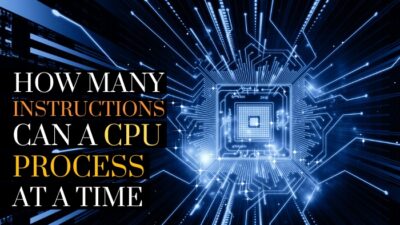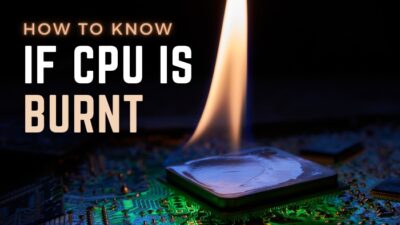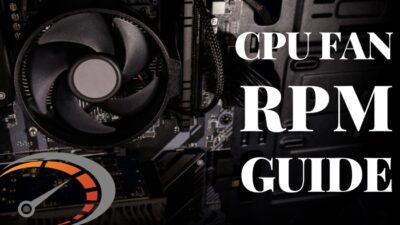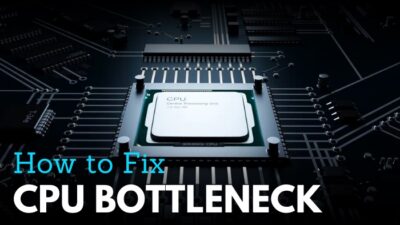At first glance, understanding computers can be overwhelming. Knowing all these names and numbers can be tricky, like, what the heck is GTX, RTX, 2060, 3080, i3, and i5 with different gens?
But I assure you, it’s not. The most powerful computer’s processing speed is 54.902 quadrillion calculations/second, which is a lot, but your brain is 1851.85 times faster. Our brains just try to do everything at once. That’s why we fail in exams.
Here, I’ve explained every part of the computer and what they do In a simple way so that anyone can understand.
And if you want to build your own computer, which I’d recommend over buying a pre-built one, just go through the article, and you’ll know what to look for.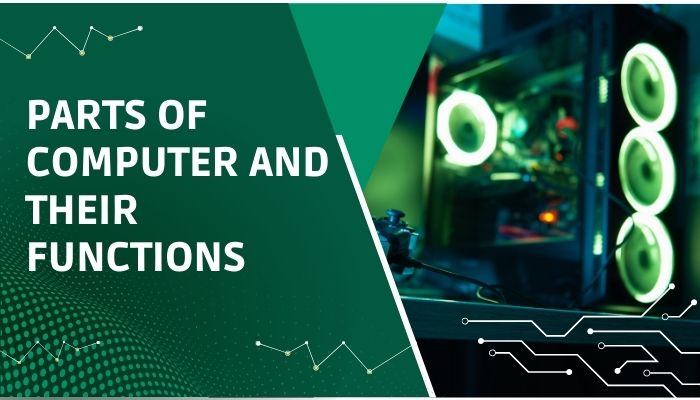
Parts of Computers and Their Functions
Some parts of the computer work as inputs, such as a mouse or keyboard, and some work as outputs, such as monitors and projectors, and then there is the brain, the Central Processing Unit (CPU). It processes data given by inputs and commands accordingly to the outputs.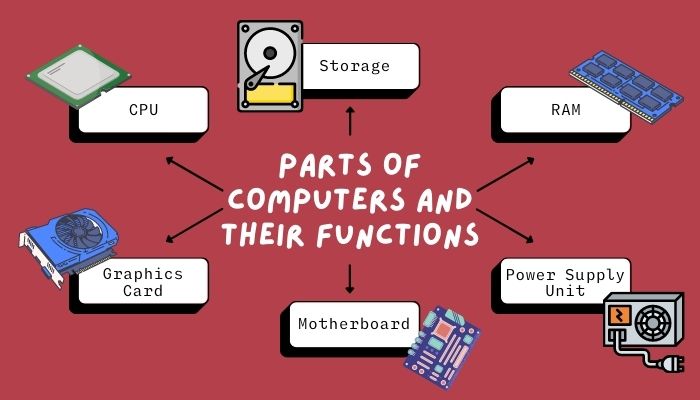
Here are the parts of the computer and their responsibilities:
1. CPU
Let’s start with the most complicated part. The CPU, also known as the processor, is your computer’s brain.
It controls all operations like Tommy Shelby from Peaky Blinders or the Professor from Money Heist. They are the brains of the operations. And some might say they are hot. Well, so is the CPU. The CPU is so hot that it has its own heatsink to cool down.
The CPU is good at doing things with data, reading it, arranging it, and doing massive calculations to run programs. Other parts of the computer support the CPU and provide data so the CPU can do its job correctly.
Processors can range from 2 cores to 16 cores. The more cores, the more you can open tabs and run multiple softwares as the processor can put different tasks to different cores.
If you want a PC just to surf the web and watch YouTube, a 4 core CPU is enough. In case you want to build a gaming PC, you’ll need 4 to 6 cores. And if you do video editing, Photoshop, and other workstation activities and programs, you’ll need at least 6 core processors.
Also check our exclusive tutorial on can I upgrade CPU without changing Motherboard.
2. Storage (HDD/SSD)
Hard Disk Drives (HDDs) are where everything is stored; your pictures, videos, documents, and games. But accessing the data is slow; it takes a long time to load. Solid State Drives (SSDs) solve this issue. Accessing the files on SSDs is much faster.
If you don’t have the budget for large storage SSDs, buy at least 120GB to install just the OS and other softwares so it’ll load faster, and you can keep pictures and videos on HDD.
In terms of how much storage you need is up to you and what you are going to do with your PC. If you are building a gaming PC, get 2 terabytes or try to get at least 1 terabyte SSD, considering how big modern games are getting.
Assuming that you are building your own PC, you can always buy more storage later as long as you have more SATA ports or NVMe slots available. You can use external hard drives in case you don’t have extra slots. Keep in mind that they are slow.
3. RAM
Random Access Memory (RAM) is another type of storage. But it sacrifices storage space for instant access.
When you run a program, the CPU identifies the parts of data needed to run the program and moves those parts to the RAM because RAM provides quick access. That’s why we see the loading screen when we start a level in a game. Basically, that part of the game is loaded into the RAM from HDD or SSD.
The more RAM you have, the more programs you can load into it. And CPU can access those programs faster and start processing the data.
For a gaming PC, you need 16GB of RAM; for web browsing, 8GB or even 4GB is enough.
To improve gaming performance, it is not important to have more than 16GB of RAM; the more essential factor is the RAM speed and whether your RAM is a single channel or dual channel. If there are two RAM sticks on your motherboard, it is running on a dual channel.
A dual channel provides more bandwidth to the CPU to access the RAM; it doesn’t make the data transfer faster, but rather the amount of moving data is doubled compared to a single channel.
Also, check out our separate post on will RAM increase computer speed.
4. Graphics Card
The Graphics Processing Unit (GPU), also known as the graphics card or video card, is a computer itself; it has its own processor and its own memory called VRAM.
It turns 1s and 0s into a constantly updated 3D world. Yes, the CPU can also do this, but it won’t look good, and the CPU will overheat. It already has so much on its plate.
The graphics card is there only to figure out what pixels to light up on your screen, in what color, and at what time.
If you are playing a modern open-world game with many elements and high-quality textures, your CPU creates that world and knows where everything is, using the data from your RAM, which was loaded from your hard drive. But the GPU shows what the world should look like based on where you are.
The GPU is the powerhouse of most video games, and if you want to build a gaming PC, you should definitely buy a modern GPU.
To know how good a GPU is, just look up the benchmark for that GPU and compare it with other GPUs.
5. Motherboard
A mother is the glue that holds the family together. Similarly, a motherboard holds all the computer parts together.
The motherboard is a big, flat circuit board where all the parts of the computer are connected. It provides the paths for these parts to send data to one another using electrical currents.
The CPU accesses data from RAM; the RAM gets data from the hard drive, the CPU sends data to the GPU, and the GPU sends the processed data to the display. All of this is done through the motherboard.
When building your PC, make sure the motherboard has the same socket and supports the CPU you want to use.
Check out the easiest way to fix Motherboard temperature high.
6. Power Supply Unit (PSU)
The PSU is plugged into the outlet and provides electricity to all your computer’s components.
Don’t buy a cheap PSU so you can spend more money on other parts. Because if the power supply shorts out, it can damage other components and even take down the whole computer with it.
7. Computer Case
The case is a big box that houses all the parts of your computer. It also provides mount points for fans.
The one thing you should consider when choosing a case is whether it has good airflow or not because good airflow will keep all the components cool. Understand where the air is coming from and how it goes through all the parts and out of the case.
Also, check out our separate post on how many years should a Desktop Computer last.
Final Thoughts
See, understanding the computer wasn’t so hard after all. Now go, buy the necessary components and start building your PC. I’ll be here helping you.
Let me know if I can help you with anything else regarding any other computer parts. See you in the comment section.

